Ringbone - Lameness in Horses
Ringbone refers to a disease which involves either the coffin joint or the pastern joint. High ringbone involves the pastern joint, low ringbone involves the coffin joint. Ringbone is further classified as periarticular, meaning the new bone is around a joint, but does not involve a joint surface; and articular, which is when the new bone involves a joint surface.
Any horse can develop ringbone over the years as a result of the cumulative effects of the trauma of repetitive motion stress, long term concussion, and nutritional imbalances. This condition is expedited by poor confirmation which causes the horse to stress one aspect of a joint more than another. For example, upright pasterns, or weak collateral ligaments of the pastern joints. Ringbone can also be caused by any injury which disturbs the periostium of the bone, especially wire cuts. The initial signs of ringbone are generally not specific and may range from a decrease in the normal performance of your horse to variable progressive lameness.
In early cases of acute periarticular ringbone, cold therapy applied twice daily for 20-30 minutes for several days will help to reduce swelling and pain. Your vet may also prescribe a cycle of anti-inflammatory medication and recommend stall rest for your horse.
In early cases of articular ringbone, where the horse is lame, your vet will most likely treat your horse with a cycle of long acting corticosteroid in the affected joint. Consult your veterinarian for advice in both types of early ringbone; especially if your horse is a valuable performance horse.
All bio-mechanical treatment for ringbone consists of trimming methods and the application of alternative shoeing that lessen the articulation of the affected joint. Trimming, by itself, is not going to be as effective as the application of therapeutic shoes. Proper trimming and the right set of corrective shoes can do wonders in getting your horse back to health.
Ringbone should be taken very seriously; more than one great horse has been shut down by this disease. As with anything equine, early detection is the key. Always pay close attention to your pony’s feet, and keep in good communication with your farrier.
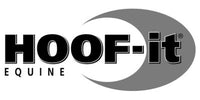
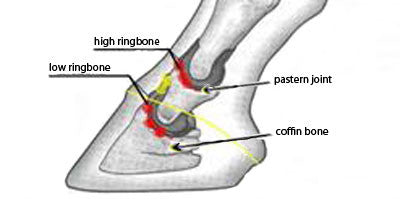
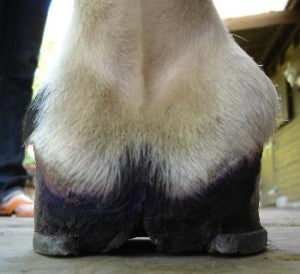
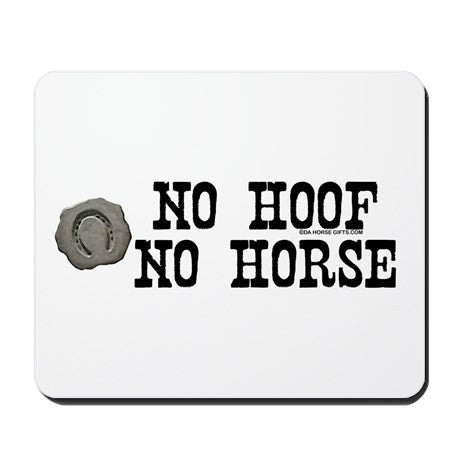
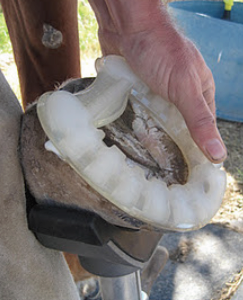
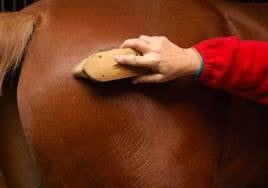
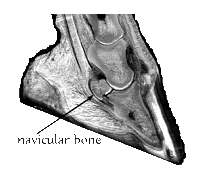

 Winter is the time when a lot of horse owners choose to pull their horse’s shoes and let the hoof regenerate. Pulling the shoes and leaving your horse barefoot enhances the overall health of the feet. Hooves tend to grow more slowly in the winter months. However, the unshod feet should be trimmed regularly, 4 to 6 week intervals, with an emphasis on keeping the edge of the hoof sufficiently rounded. The hooves should also be painted twice a week with an appropriate hoof dressing. A little extra care and attention during the winter months when your horse is barefoot will result in a stronger healthier foot the rest of the year. However, there are more than a few of us who ride and compete in the winter months and pulling shoes is just not ever going to be an option. If you are like me and live in a snow filled winter environment you know that training outdoors, and trail riding, can cause problems for your horses feet. The main issue that I have to deal with when I am riding in the snow is “snow-balling”. This is when mixtures of snow, ice, mud, manure, grass, or bedding accumulate in the sole area. It can pack very densely into large rounded ice mounds that are almost impossible to chip out. When a horse is forced to stand or move on snowballs he has decreased stability in his fetlock joint. His weight is liable to roll medially, laterally, forward, or backward. It is extremely fatiguing for his muscles, tendons, and joint ligaments as he constantly tries to make adjustments to maintain balance. It is easy for a snowballed horse to lose his balance and wrench a fetlock. I have found a product that works perfectly for my horse, and is very easy for me to apply by myself. I use the HOOF-it Winter Snow Pad to keep my horse’s hooves clear of debris in the winter. With this pad in place I have full confidence in my horse’s footing while training outdoors in the snow, or trail riding. Let me know if you have tried HOOF-it Snow Pads
Winter is the time when a lot of horse owners choose to pull their horse’s shoes and let the hoof regenerate. Pulling the shoes and leaving your horse barefoot enhances the overall health of the feet. Hooves tend to grow more slowly in the winter months. However, the unshod feet should be trimmed regularly, 4 to 6 week intervals, with an emphasis on keeping the edge of the hoof sufficiently rounded. The hooves should also be painted twice a week with an appropriate hoof dressing. A little extra care and attention during the winter months when your horse is barefoot will result in a stronger healthier foot the rest of the year. However, there are more than a few of us who ride and compete in the winter months and pulling shoes is just not ever going to be an option. If you are like me and live in a snow filled winter environment you know that training outdoors, and trail riding, can cause problems for your horses feet. The main issue that I have to deal with when I am riding in the snow is “snow-balling”. This is when mixtures of snow, ice, mud, manure, grass, or bedding accumulate in the sole area. It can pack very densely into large rounded ice mounds that are almost impossible to chip out. When a horse is forced to stand or move on snowballs he has decreased stability in his fetlock joint. His weight is liable to roll medially, laterally, forward, or backward. It is extremely fatiguing for his muscles, tendons, and joint ligaments as he constantly tries to make adjustments to maintain balance. It is easy for a snowballed horse to lose his balance and wrench a fetlock. I have found a product that works perfectly for my horse, and is very easy for me to apply by myself. I use the HOOF-it Winter Snow Pad to keep my horse’s hooves clear of debris in the winter. With this pad in place I have full confidence in my horse’s footing while training outdoors in the snow, or trail riding. Let me know if you have tried HOOF-it Snow Pads